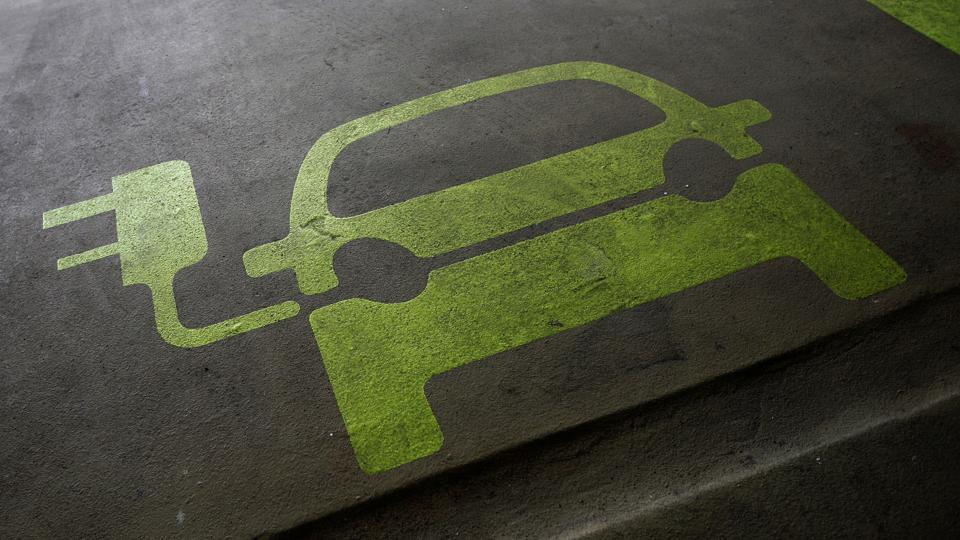ImpactAlpha, July 5 – Here’s the thing about tipping points: things move very slowly until they move very fast.
The current case in point is climate action. Global investment in the great low-carbon rebuild has been essentially flat for the past three years, at barely one-third of the $1 trillion needed every year, at a minimum.
Does that mean momentum has stalled and the planet is cooked? Or that the inexorable math of falling costs and rising risks will at some point – soon? – lead to dramatically lower carbon emissions that leave fossil-fuel assets stranded?
The former is essentially the current conventional wisdom and may indeed, disastrously, prevail. That makes any signals of the fabled tipping point (that saves the planet, etc.) particularly instructive.
The Impact Alpha: The climate-finance tipping point is here, and other blue-sky thinking
There are some clues in the six-month report card of the Climate Action 100, a grouping of major global investors that have agreed to press 100 “systemically important greenhouse gas emitters” for full climate-risk analysis, financial disclosure.
The pressure on the SIGGEs, and the commitments by the investors, is part of the buildup to the Global Climate Action Summit set for September in San Francisco. It’s something of a swan song for outgoing California Gov. Jerry Brown, who, along with billionaire Michael Bloomberg, is leading hundreds of state and local efforts that have declared “We Are Still In” (the Paris climate accord).
Climate Action 100 organizers say 18 of the SIGGEs now “officially support or have committed to implement” the recommendations of the Task Force on Climate-Related Disclosure, the bible for assessing climate risks. That’s up from a half-dozen six months ago.
“We are seeing companies commit to improved climate change disclosures and set targets for greenhouse gas emissions reductions,” said Andrew Gray of AustralianSuper, a $96 billion retirement fund manager that has signed the Climate Action 100 pledge.
Asset owners
The institutional asset owners that have taken the Climate Action 100 pledge — the supertankers of global finance ––are signaling a shift in direction of more than $30 trillion in capital. Since the spring launch, an additional 64 institutional investors representing $4 trillion in assets brings the total investor roster to 289, with nearly $30 trillion in assets.
Universal Ownership: The supertankers of global finance are shifting course
Those investors are aiming to secure commitments from boards and management to “take action to reduce greenhouse gas emissions across their value chain, consistent with the Paris Agreement’s goal of limiting global average temperature increase to well below 2-degrees Celsius above pre-industrial levels.”
By targeting 100 “systemically important greenhouse gas emitters” the five-year campaign has taken aim at the kingpins of the carbon economy. The notion is that targeted shareholder pressure on the most strategically important companies will turn them from laggards to leaders (or, alternatively, casualties). That, in turn, will flip the rest of the market.
“We are doing this because serious financial risks are in play across the global economy,” CalPERS’ Anne Simpson said in a statement. With nearly $350 billion in assets, the California public employee pension fund is one of the largest in the world.
Pension funds tell companies: ‘No excuses’ for inaction on climate change
The Climate Action 100 is coordinated by Ceres along with the Asia Investor Group on Climate Change, the Investor Group on Climate Change, the Institutional Investors Group on Climate Change and Principles for Responsible Investment, or PRI. The effort is part of a larger “Investor Agenda,” that will be formally launched at the September summit.
Conflicting forecasts
If accounting is destiny, there’s no turning back. Reporting under the recommendations of the Task Force could drive a sea-change in global finance as the scale of climate disruption becomes clear – and force a reckoning with the valuations of many companies.
The organizers of the Climate Action 100 effort have also created a “+-list” of 61 companies that warrant special focus. Some of the new companies “have significant opportunities to drive the clean energy transition and help achieve the goals of the Paris Agreement.” Others may be exposed to climate-related financial risks, including risks to physical assets, that are not captured solely by emissions data,” which was the basis of the original Climate Action 100 list. The new +-list companies include American and Delta airlines and Air France, along with Colgate-Palmolive, Danone, Daimler and Occidental Petroleum.
The new investors signing up to press such companies for disclosure include the $180 billion Ontario Teachers Pension Plan, the $64 billion Australian pension fund UniSuper and the $43 billion UK pension pool Boarders to Coast Pension Partnership. The wealth manager AllianceBernstein and the $10 billion Mitsubishi UFJ Trust and Banking Corp. also joined up.
Large investors are increasingly hellbent on better understanding the impact on their portfolios of the coming climate-finance disruption. For example, there’s a stark contradiction in the forecasts of the oil and gas industry, on the one hand, and global car makers, on the other, about the rate of market-adoption of electric vehicles in the next decade.
The organization Carbon Tracker estimates that every 60 million electric vehicles on the road displaces 1 million barrels per day in global demand. Remember that the great oil price crash of 2014 was a function of about a 2 million barrels per day supply-demand imbalance. In Carbon Tracker’s most disruptive scenario, electric vehicles displace 8 million barrels per day by 2035. Oil demand could peak by the late 2020s, the organization said. (Play with the various scenarios yourself with Carbon Tracker’s EV Oil Displacement Tool).
Peak oil
Earlier this year, ExxonMobil treated investors to an object lesson in the value of such risk disclosure. In its regular report, Exxon forecast that population growth will drive up oil demand by about 20% by 2040. However, when Exxon modeled demand under the Paris climate agreement’s “2-degree” scenario, world oil consumption drops by 25% by 2040. Exxon undertook even the limited scenario-planning exercise only after shareholders voted overwhelming last year to insist the oil giant assess its climate-related risk.
Renewables are no longer ‘alternative.’ Fossil fuels are ‘legacy.’
Another sign that oil producers themselves are resigned to Peak Oil may have been last month’s decision by OPEC countries to boost production by 1 million barrels. The Brookings Institute’s Samantha Gross said the the potential for a plateau in global oil demand may have weighed on the oil ministers. “OPEC members understand that at some point in the future when demand plateaus and declines, oil will not be worth as much as it is today,” arguing for increasing production now rather than saving it for later when it may be worth less (h/t Axios’ Ben German).
Electric vehicles may be the key signal to watch for the takeoff in climate finance. Of the “clean trillion” annual investment needed to finance the low-carbon transition, as much as 70% is comprised of electric vehicle finance. Car loans are hardly an esoteric financial structure, though lease agreements are being fine-tuned to account for higher upfront costs and lower lifecycle operating and maintenance expenses. The loans, in turn, can be securitized into asset-backed bonds.
A report from CERES in May, “In Sight of the Clean Trillion,” projected a ramp-up in electric-vehicle financing in the 2020s, reaching $1.7 trillion per year in the 2030s. At that point, the tipping point will have become obvious to all. Don’t say you didn’t see it coming.
Global Banks: We’re watching how you finance the low-carbon transition











